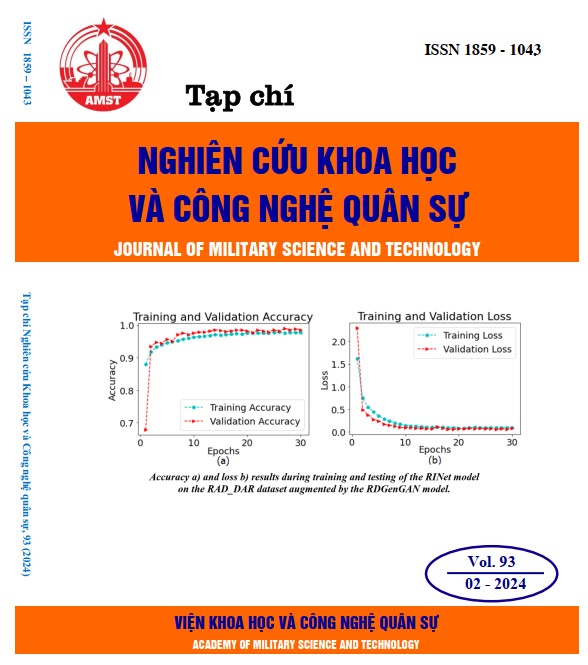Research and design a model of 2D profile generation system applied in laser welding technology using piezo linear actuators
395 viewsDOI:
https://doi.org/10.54939/1859-1043.j.mst.93.2024.137-145Keywords:
Laser profile; Laser welding; Non-contact welding; Piezo linear actuatorAbstract
The article introduces a method to create any 2D laser profiles applied in welding technology. This method allows for the creation of profiles that best suit the weld characteristics and material of the weld workpiece, thereby improving the quality, accuracy, and aesthetics of the weld and increasing laser welding efficiency. In the study, the authors proposed a model of a 2D laser profile generation system with a reflecting mirror and two piezoelectric linear actuators. The forward and inverse kinematic equations were completely solved, while a control algorithm was proposed to control the motion of linear actuators. The model is simulated on MATLAB with circular, sin-wave, and 8-figured profiles. The obtained results show that the control profiles are almost close to the desired ones (both shape and scan period). There is a displacement between them. With the given simulation parameters, the displacements of the above-mentioned profiles are 0.03 mm (1.5%), 0.05 mm (2.5%), and 0.05 mm (1.25%), respectively. This shifting can be reduced by increasing the number of samplings. The simulation results provide strong evidence for the feasibility of implementing a practical 2D laser profile generation system based on the proposed model.
References
[1]. Kenichi Iga, “Fundamentals of Laser Optics”, Springer, (1994).
[2]. Nasir Ahmed, “New developments in advanced welding”, Woodhead publishing (2005). DOI: https://doi.org/10.1533/9781845690892
[3]. M. T. Andani, et al., “Spatter formation in selective laser melting process using multi-laser technology”, Materials and Design, Vol. 131, pp. 460-469, (2017). DOI: https://doi.org/10.1016/j.matdes.2017.06.040
[4]. Lei wang, et al., “Effect of beam oscillating pattern on weld characterization of laser welding of AA6061-T6 aluminum alloy”, Materials and Design, Vol. 138, pp. 707-717, (2016). DOI: https://doi.org/10.1016/j.matdes.2016.07.053
[5]. Rolf Klein, “Laser welding of plastics”, Wiley-VCH, (2012). DOI: https://doi.org/10.1002/9783527636969
[6]. Pengfei Wang, et al., “Laser welding dissimilar materials of aluminum to steel: an overview”, The International Journal of Advanced Manufacturing Technology, pp. 3081–3090, (2016). DOI: https://doi.org/10.1007/s00170-016-8725-y
[7]. H. Zhao, D.R. White, T. Debroy, “Current issues and problems in laser welding of automotive aluminium alloys”, International Materials Reviews, Vol. 44, No. 6, pp. 238-266, (2013). DOI: https://doi.org/10.1179/095066099101528298
[8]. Muralimohan Cheepu, et al., “Optimization of process parameters using surface response methodology for laser welding of titanium alloy”, Materials science forum, Vol. 969, pp. 539-545, (2019). DOI: https://doi.org/10.4028/www.scientific.net/MSF.969.539
[9]. Mengxin Sun, Zhenwei Cao, Lukai Zheng, “Design and Experiment of a Clamping-Drive Alternating Operation Piezoelectric Actuator”, MDPI, Micromachines, Vol. 14, No. 3, (2023). DOI: https://doi.org/10.3390/mi14030525







